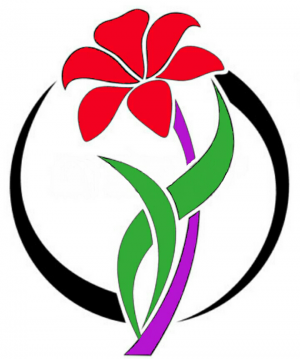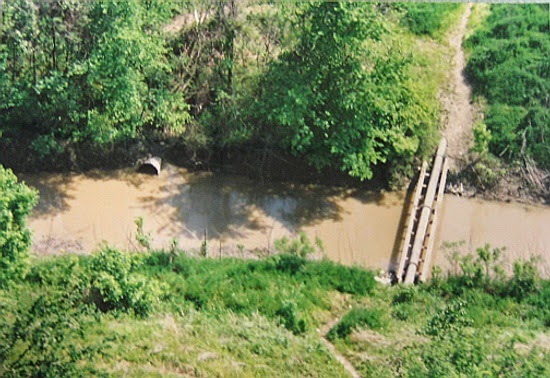“Friday the 13th” — 40 Years Later
Celebrating four decades of the movie that made slashers a staple of American cinema
From the Carter Administration to COVID-19, the Camp Crystal Lake saga continues to ripple across pop culture
By: Kristen M. Gilotti
kmg0128@hotmail.com
After exhausting months of perilous encounters, summer has arrived. But — doing my best Crazy Ralph impersonation — the life-threatening COVID-19 and warnings have not ceased! As I celebrate the 40th anniversary of Friday the 13th, I also want to take the time to elaborate on some similarities with the plot’s reopening of Camp Crystal Lake and town kook Crazy Ralph’s “stay away” warnings to the current regulations of 6-foot social distancing and other protections when stepping outside into the infected world.
 |
| And by "present," I guess they meant "40 years ago, actually." |
The film moves to the present day — as fate would have it, also Friday, June 13 — and new camp counselor Annie enters a local diner and inquires about Camp Crystal Lake. The plot begins to thicken as Crazy Ralph warns Annie about its “death curse.” Annie’s ride to the camp, a friendly truck driver named Enos from the diner, also convinces her to reconsider the job and explains why the camp is purportedly cursed: the two murders from the beginning of the movie and a boy’s tragic drowning in 1957.
Obviously, Annie ignores the horrific stories and continues to “Camp Blood.” Annie then hitches a ride from a suspicious driver, who intentionally passes the entrance to Camp Crystal Lake. These are her last moments as she frightfully and clumsily jumps out of the car and tries to hide in the woods. The assailant catches up and slits her throat.
Seeing any coronavirus parallels? To me, this scene ties into the continuation of COVID-19 cases rising on a daily basis. Although essential places (e.g., salons, gyms, coffee shops, etc.) reopened, COVID-19 still lingers on and there are major warnings about taking precautions to avoid it as the month of June begins.
As the movie’s famous tagline “They were warned, they are doomed, and on Friday the 13th, nothing will save them” promises, counselors Alice, Brenda, Bill, Jack, Marcie and Ned are all terrorized.
Of course, Crazy Ralph tries to warn them that the camp is cursed and they will all die, but they ignore him and continue to unload the supplies and set up the cabins. They even encounter disturbances such as witnessing a figure watching them in the woods and having to kill a snake that was placed in one of their cabins (by the way, the snake used in the film was real, and so was its on-camera dismemberment.)
Again, these incidents link to the COVID-19 warnings — where citizens refuse to listen and still travel place-to-place.
In particular, the various acts of slaughter also strike my attention when watching one of my favorite horror movies. On the same stormy night, the counselors in Friday the 13th are killed in the following creative and bloody ways:
🔪 Ned – Throat slit
🏹 Jack – Pierced throat via an arrow through the bed
🪓 Marcie – Axe slammed on her head
😱 Brenda – Blinded by a light and thrown through a window
🏹 Bill – Pinned to a door by several arrows
 |
| Speaking of people who could really use some hand sanitizer ... |
The conclusion of Friday the 13th brings insanity and uncontrollable rage between Mrs. Voorhees and Alice on how nobody paid attention to the warnings. She and Alice wrestle aimlessly and hit each other with a paddle and a frying pan — and in any way they can think of — to maintain the madness. Such is oddly relatable in 2020 — after all, with the social restrictions due to COVID-19, all that cabin fever and confusion can lead to excessive craziness!
I always enjoy the ending where Alice gathers her energy and the camera focuses up-close on the two angry but fearful faces, right before she decapitates Mrs. Voorhees with the machete. Obviously, the main objectives of the story are finished; however, there is an unexpected surprise when a deformed boy attacks a traumatized Alice under the water the next morning. She still survives but knows the boy (presumed to be Jason) is on the loose and that Camp Crystal Lake will be cursed for an extended period of time — if not always.
Forty years later, Friday the 13th remains one of the most popular horror movies of all-time. And due to binge-watching nowadays, I was able to pay more attention to the nuances of the plot, the different grotesque killings and, of course, tie the story into what is currently happening — or about to occur — in June 2020.
Going back to the craziness of COVID-19, I think Friday the 13th mirrors that modern day fear of “public” being open ... but the horror being far from over.
Uncommon Journalism, 2020




Comments
Post a Comment